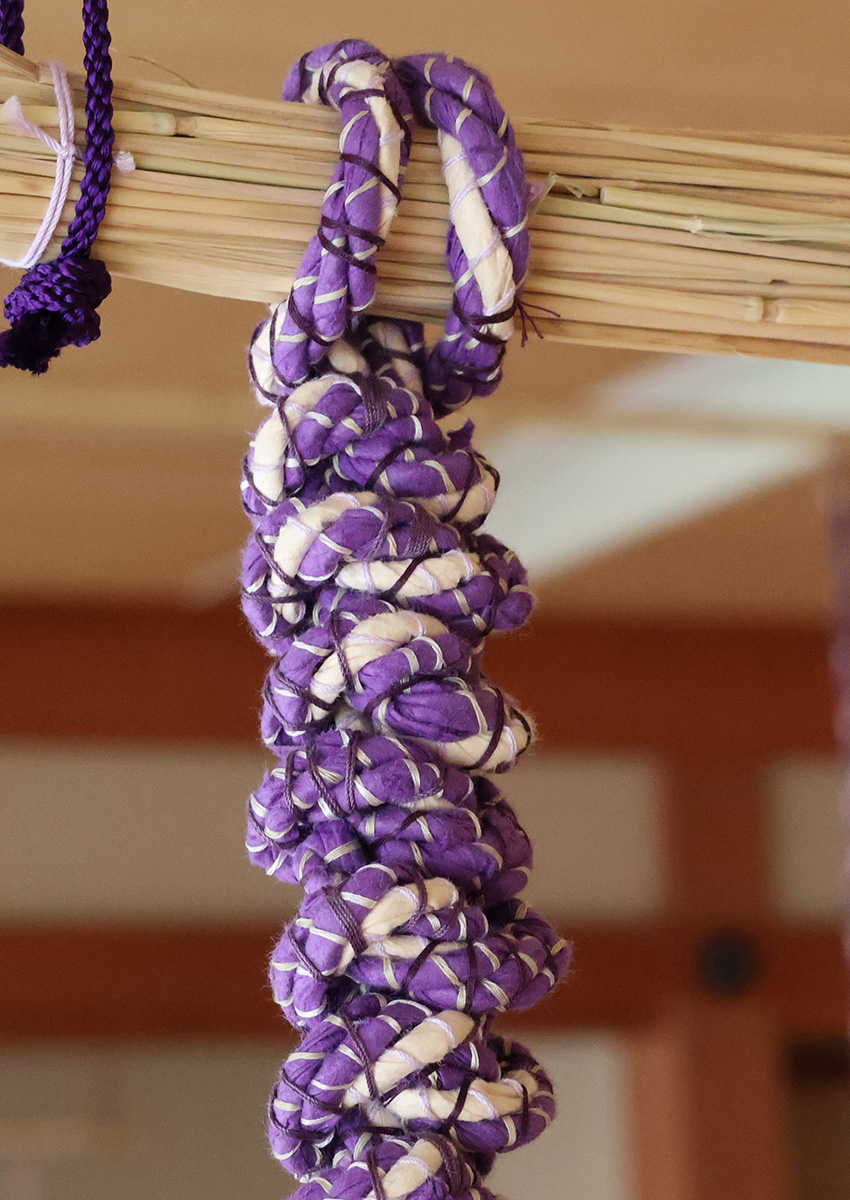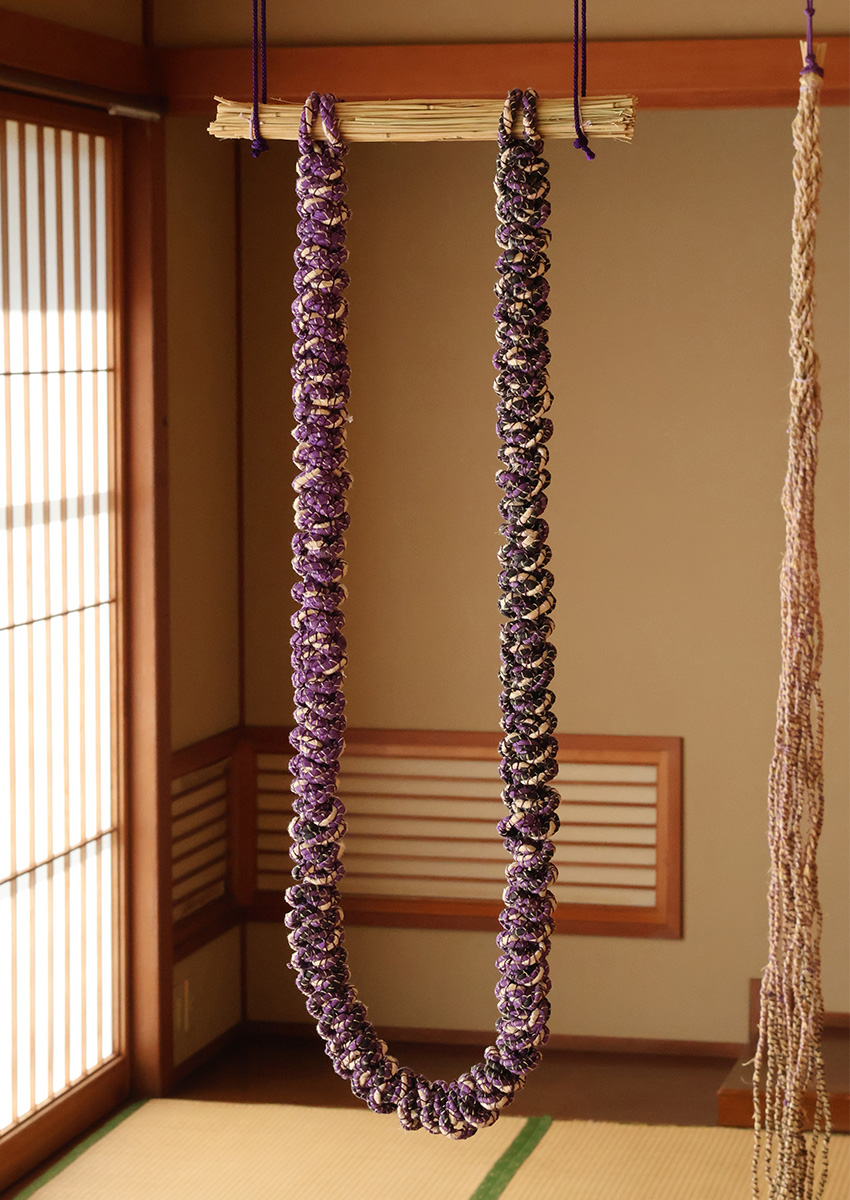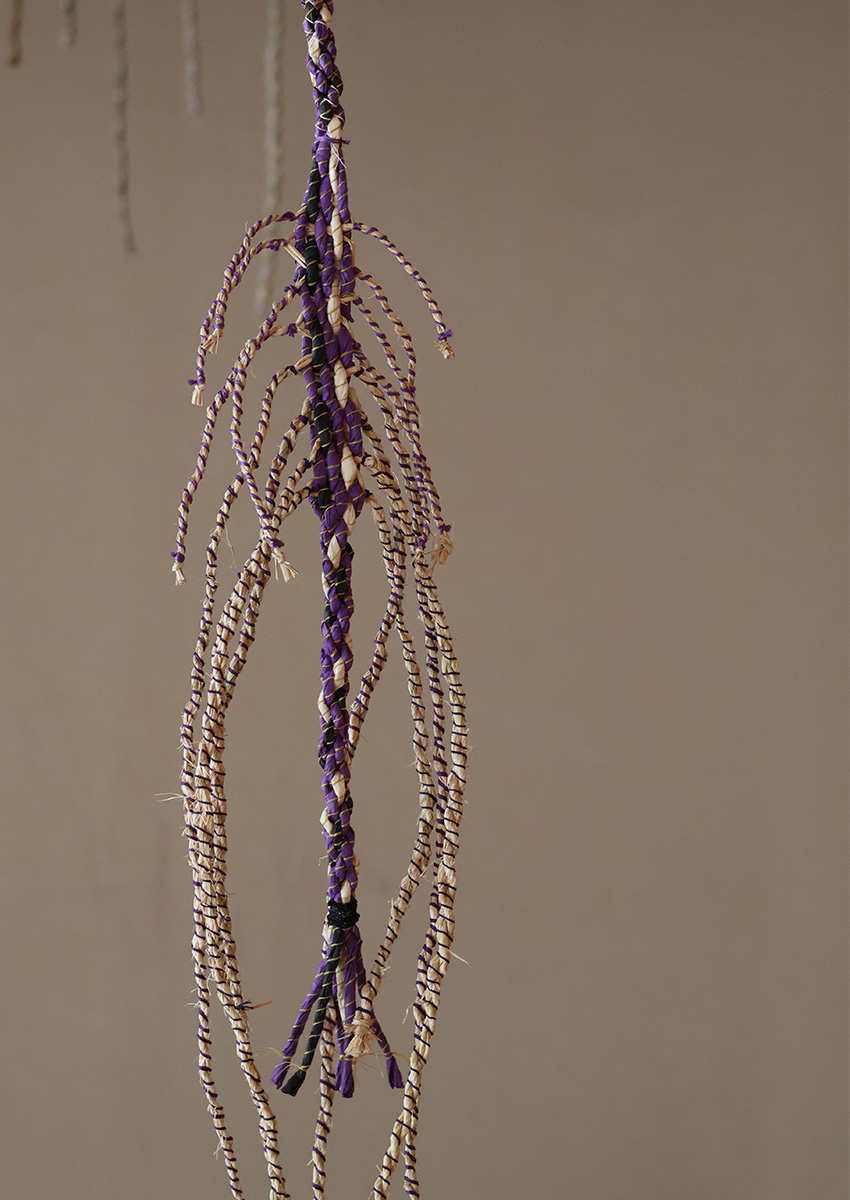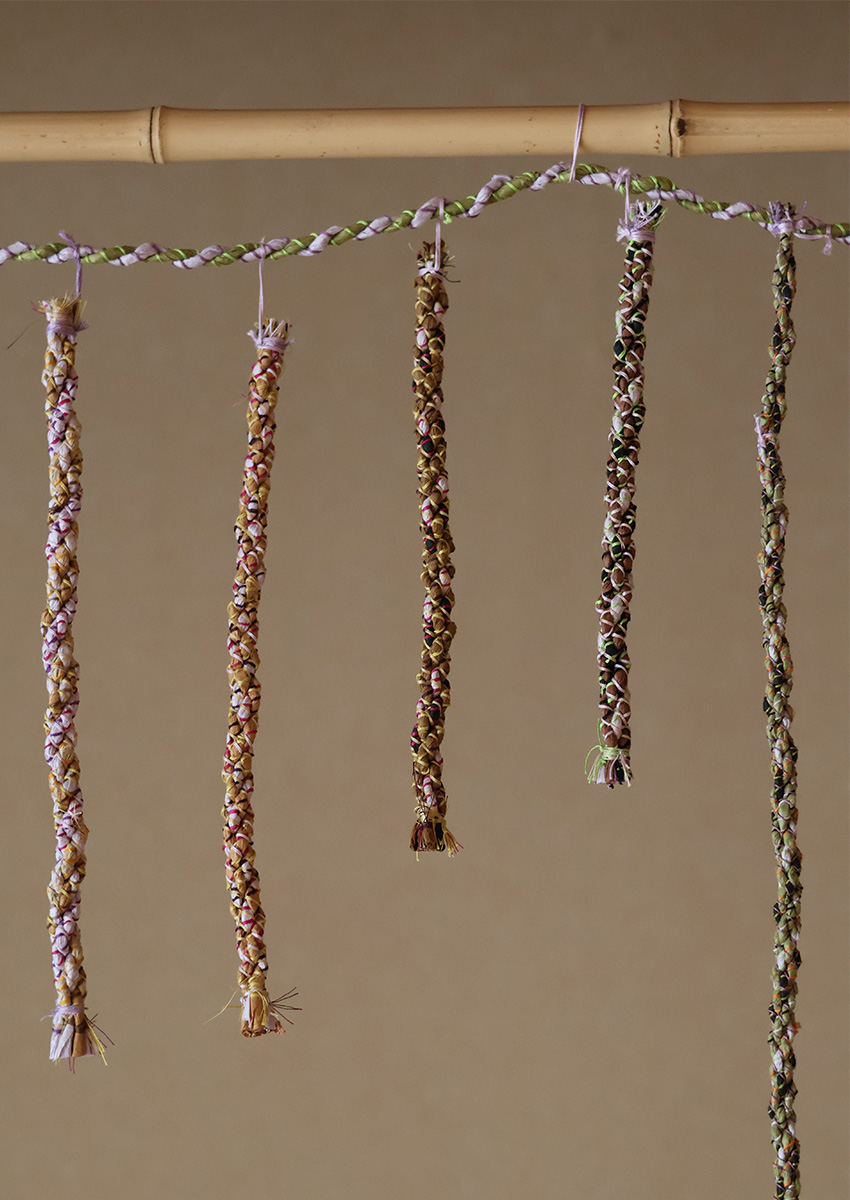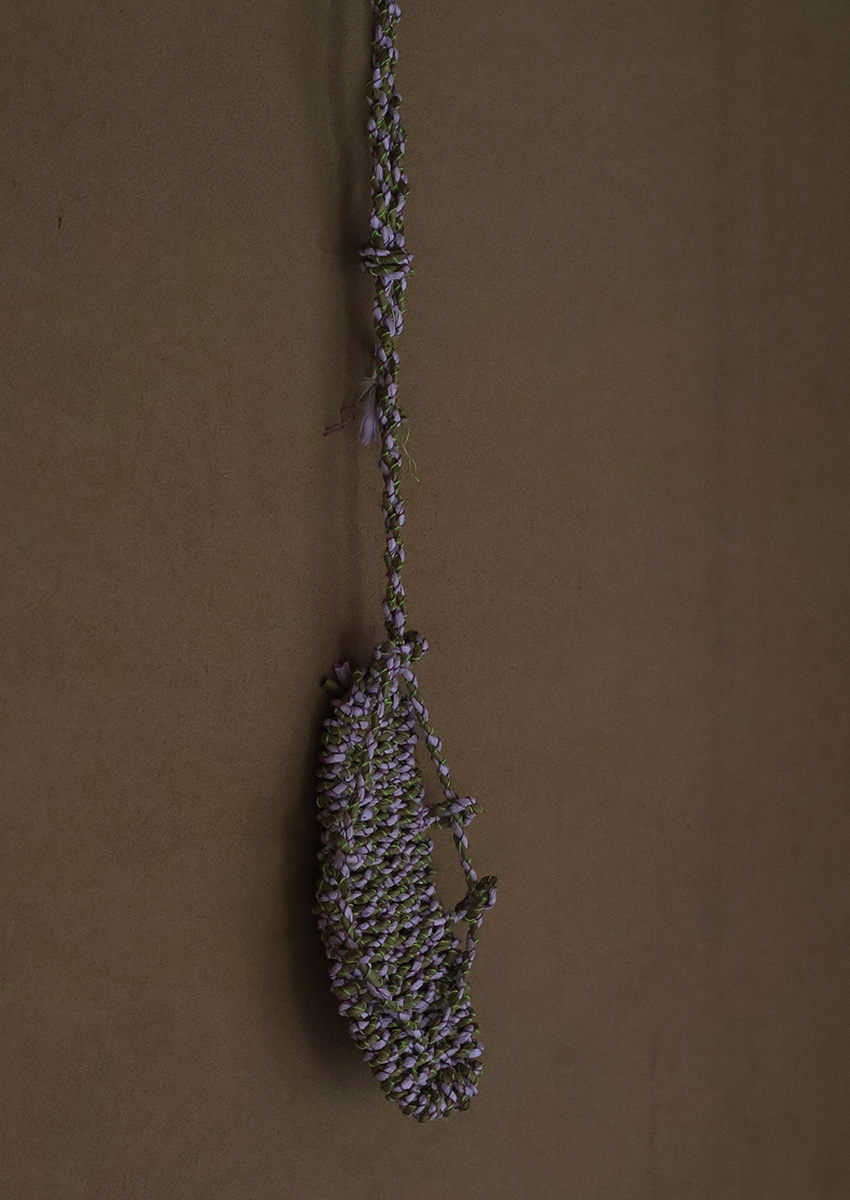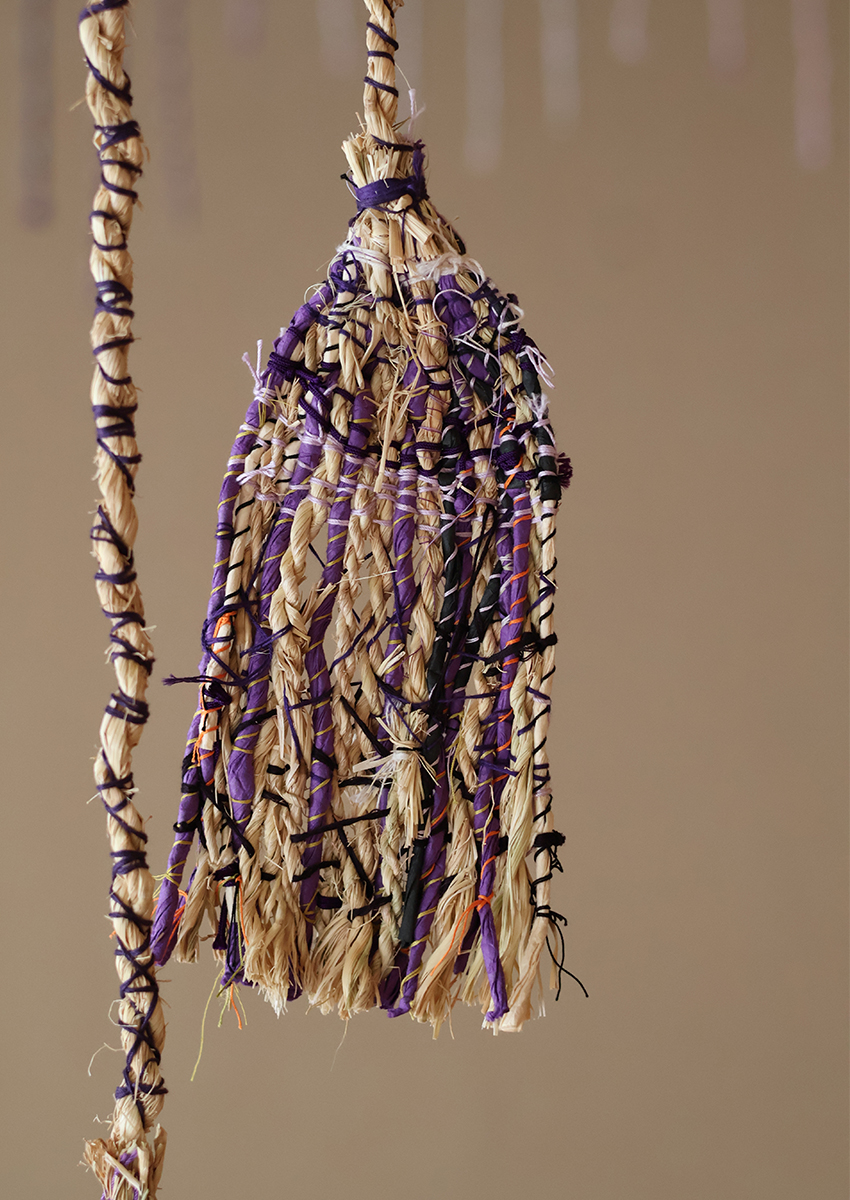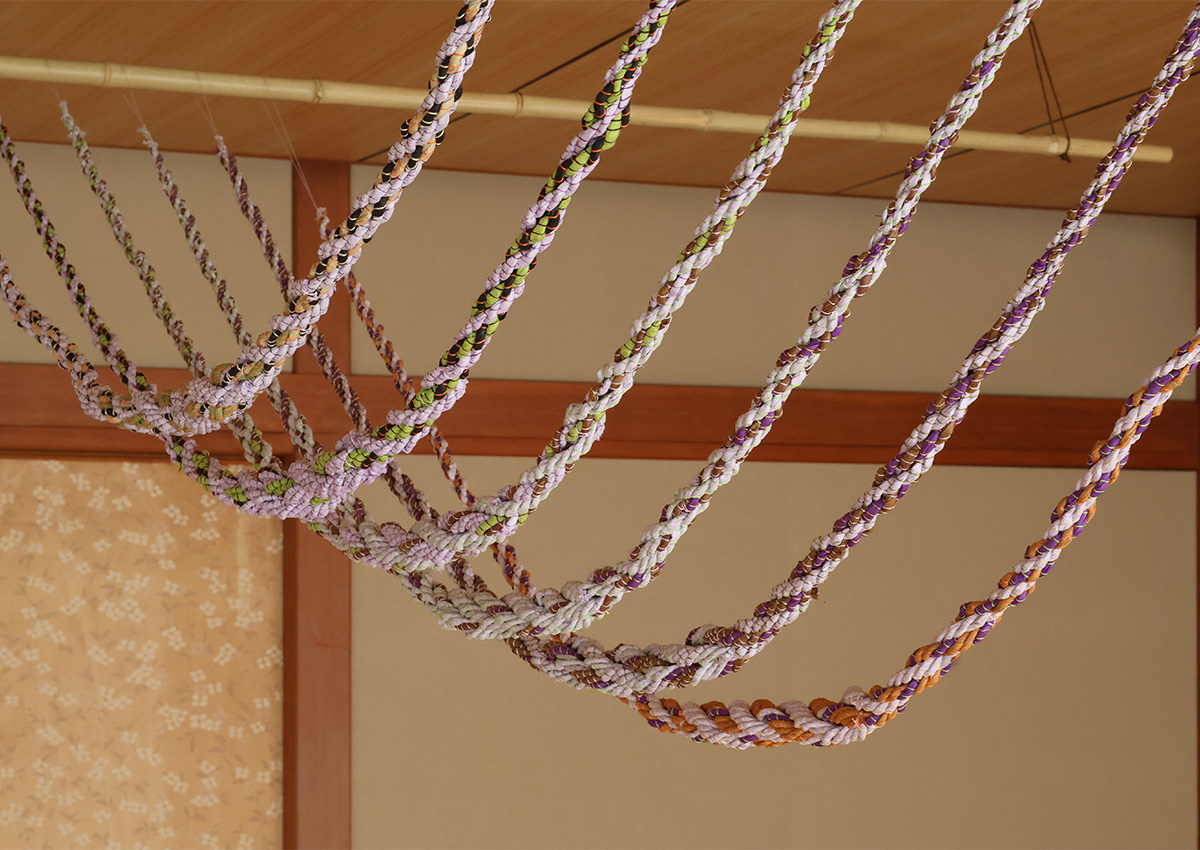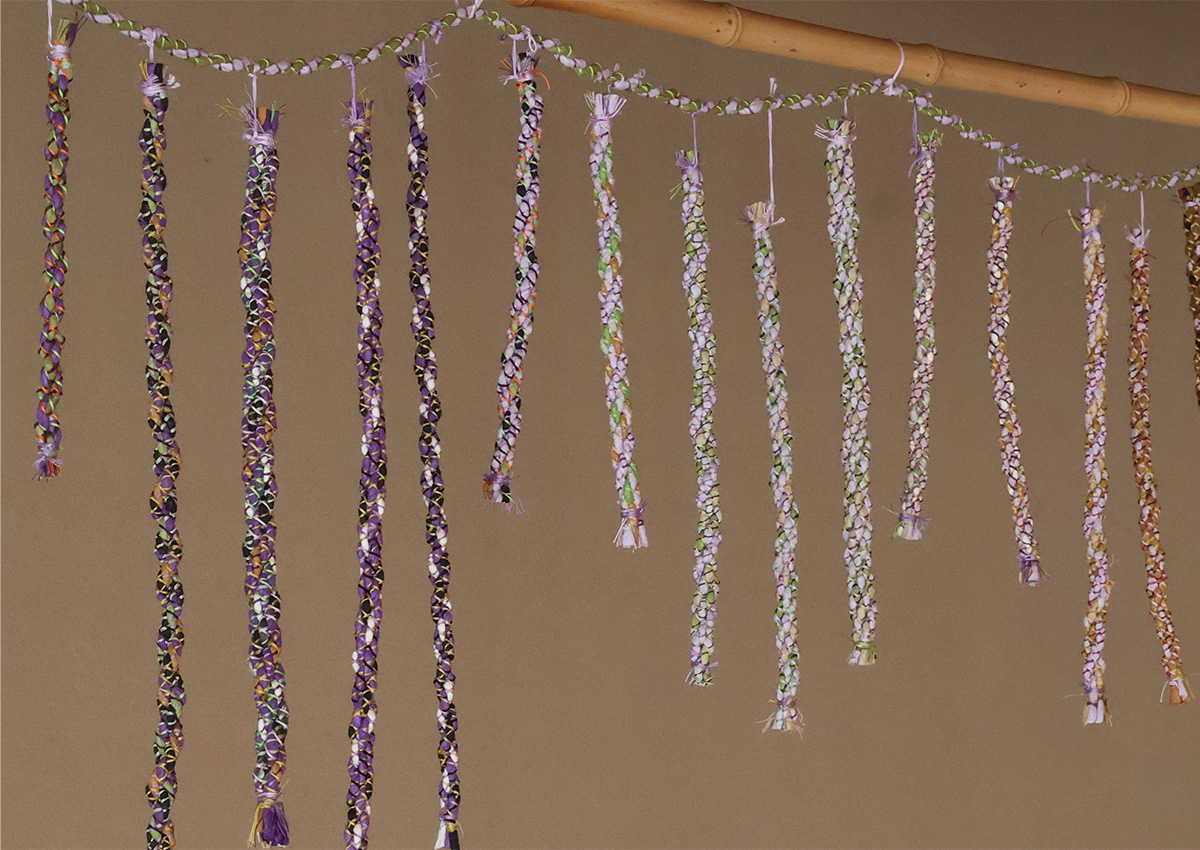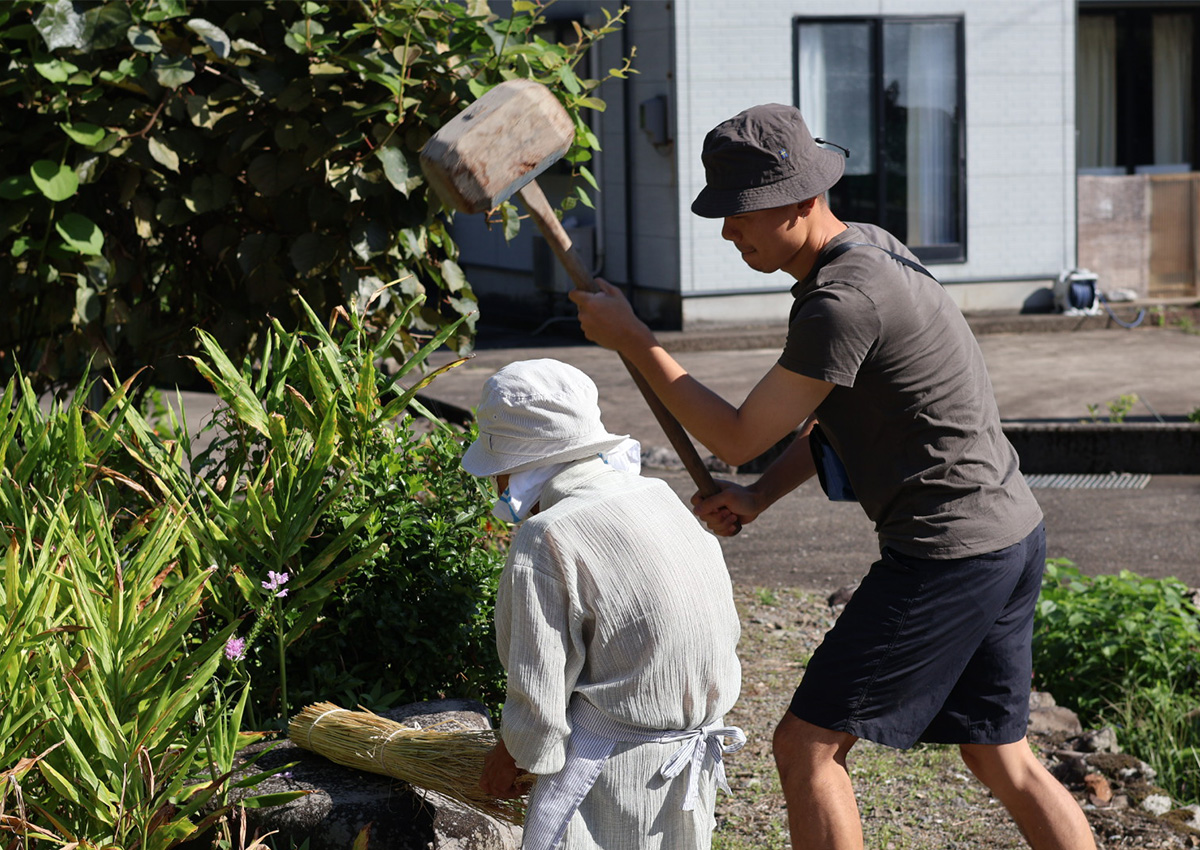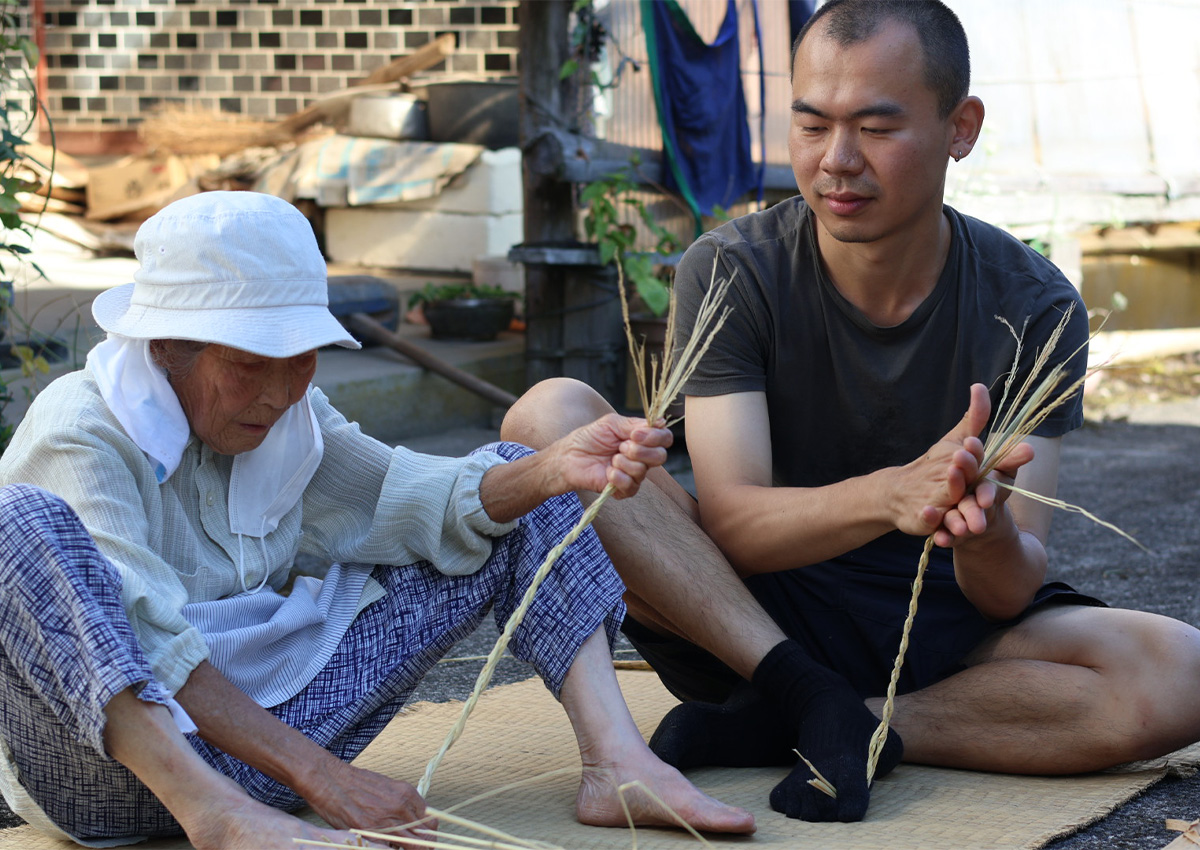NIMITTA
2024, ZEN AIR Eiheijirice straws, Eichizen washi, cotton, polyester
Rope is one of humanity's oldest technologies. During my stay at ZEN AIR Eiheiji in Japan, I became fascinated by the diverse meanings and contexts of rope. This curiosity led me to explore rope-making using local rice straw and washi (Japanese paper). I immersed myself in traditional practices, harvesting rice alongside local farmers and crafting waraji (traditional straw sandals) with Eiheiji monks. Incorporating Echizen washi into this ancient craft, I experimented with various shapes, patterns, and techniques.
In Buddhism, nimitta refers to mental images that arise during meditation. Inspired by this concept, I sought to create diverse forms and patterns from rope by reconfiguring simple techniques such as twisting, binding, and knotting. The process became a meditative practice—my body in motion while my mind remained still. Through this rhythmic, intentional making, nimitta took shape—manifesting in various rope forms.
I have long been intrigued by the emergence of universal symbols and patterns across cultures. Inspired by shimenawa (sacred ropes in Japan), I created works that echo similar forms found in North Asian shamanic garments and the Andean quipu (knotted cords used for recording data). I was also drawn to the color purple, a hue deeply embedded in Japanese culture, where it is associated with royalty and Buddhist traditions. In contrast, contemporary Western culture often links purple to psychedelic and feminist art.
By working with universal forms, colors, and techniques—each carrying distinct meanings across different cultures—I explore the future of heritage, craft, and symbolism within an intercultural context.
